The coefficent of friction between the masses 2m and m is 0.5. All other surfaces are frictionless and pulleys are massless. Column I given the different values of m1 and column II gives the possible acceleration of 2m and m. Match the following :
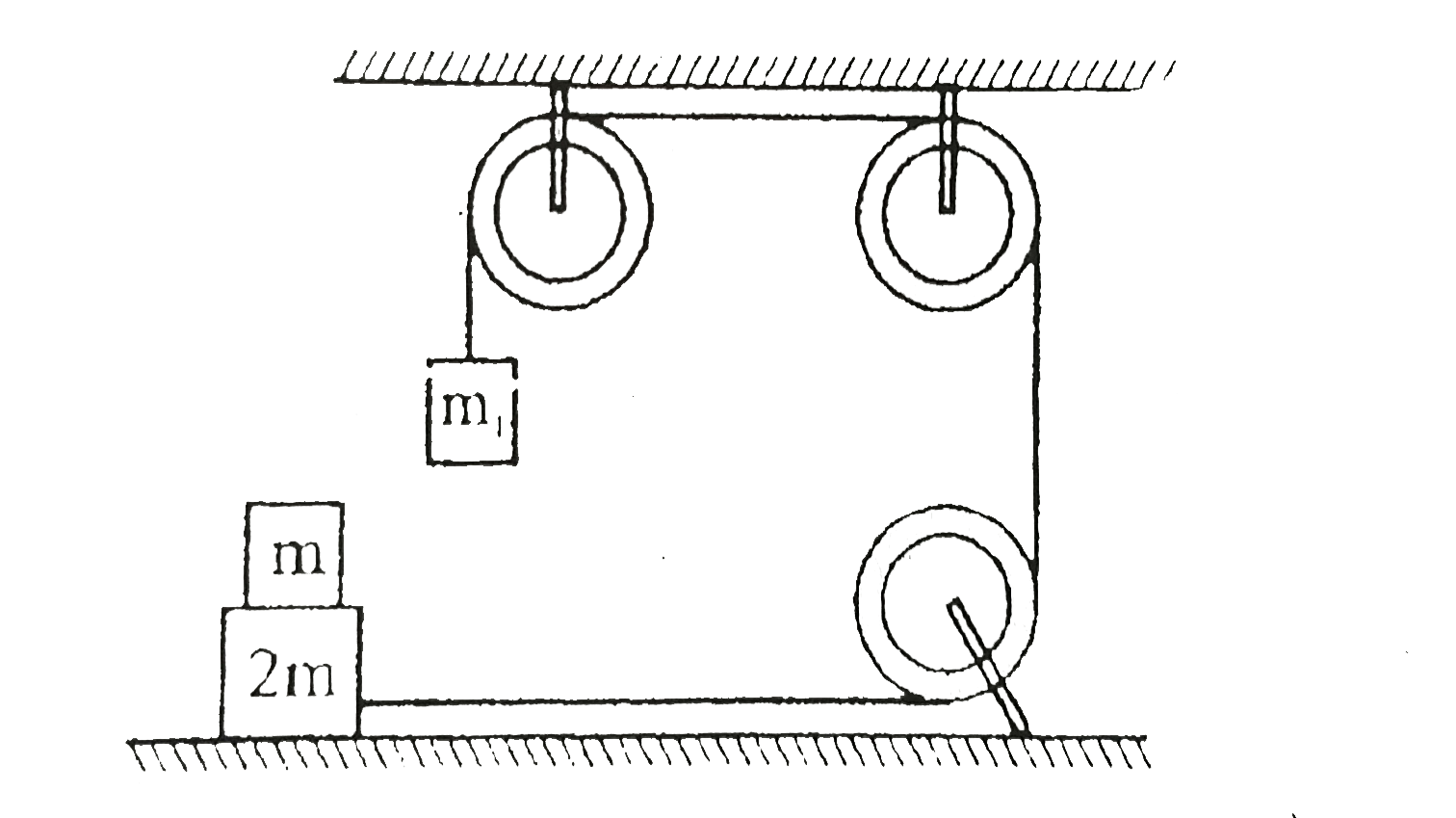
Column IColumn II(A)m1=2m(P)Accelerations of 2m and m are same(B)m1=3m(Q)Acceleration of 2m and m are different(C)m1=4m(R)Acceleration of 2m is greater than m(D)m1=6m(S)Acceleration of 2m is less than 0.6 g(T)Acceleration of 2m is greater than 0.6 g
The correct Answer is:(A) = PS, (B) = PS, (C ) = QRS, (D) = QRT
(m1)max to move together
a=m1gm1+m+2m≤μg≤0.5g
(1−0.5)m1≤3m×0.5
m1≤3m
otherwise m and 2m will move with different acceleration.
Topper's Solved these Questions
- BOOK - BANSALCHAPTER - TEST PAPERSEXERCISE - PHYSICS PART (C )15videos
TEST PAPERS
- BOOK - BANSALCHAPTER - TEST PAPERSEXERCISE - PHYSICS PART A35videos
TEST PAPERS
- BOOK - BANSALCHAPTER - TEST PAPERSEXERCISE - PHYSICS PART (A)32videos
TEST PAPERS
- BOOK - BANSALCHAPTER - SEMICONDUCTORSEXERCISE - CBSE Question32videos
SEMICONDUCTORS
Similar Questions
Knowledge Check
- Question 1 - Select One
If m1=10kg,m2=4kg,m3=2kg, the acceleration of system is
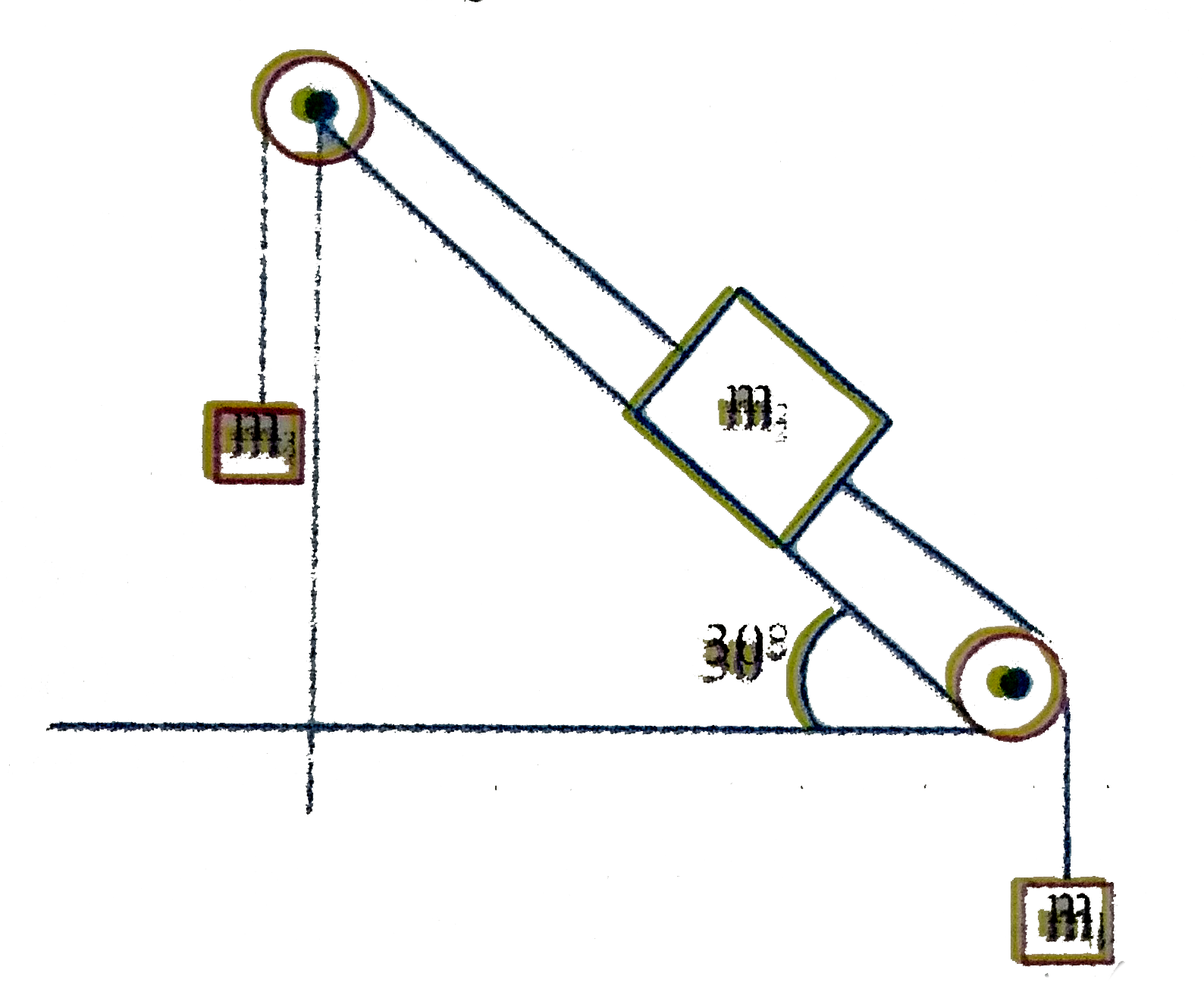 .A5g/2B5g/3C5g/8D5g/14
.A5g/2B5g/3C5g/8D5g/14 - Question 2 - Select One
In fig. both pulleys and the string are massless and all the surfaces are frictionless.

Given m1=1kg,m2=2kg,m3=3kg.
The acceleration of m1 isA407ms−2B307ms−2C207ms−2D√17g7ms−2
Three blocks of masses m1,m2andm3 are connected as shown in the figure. All the surfaces are frictionless and the string and the pulleys are light. Find the acceleration of m1
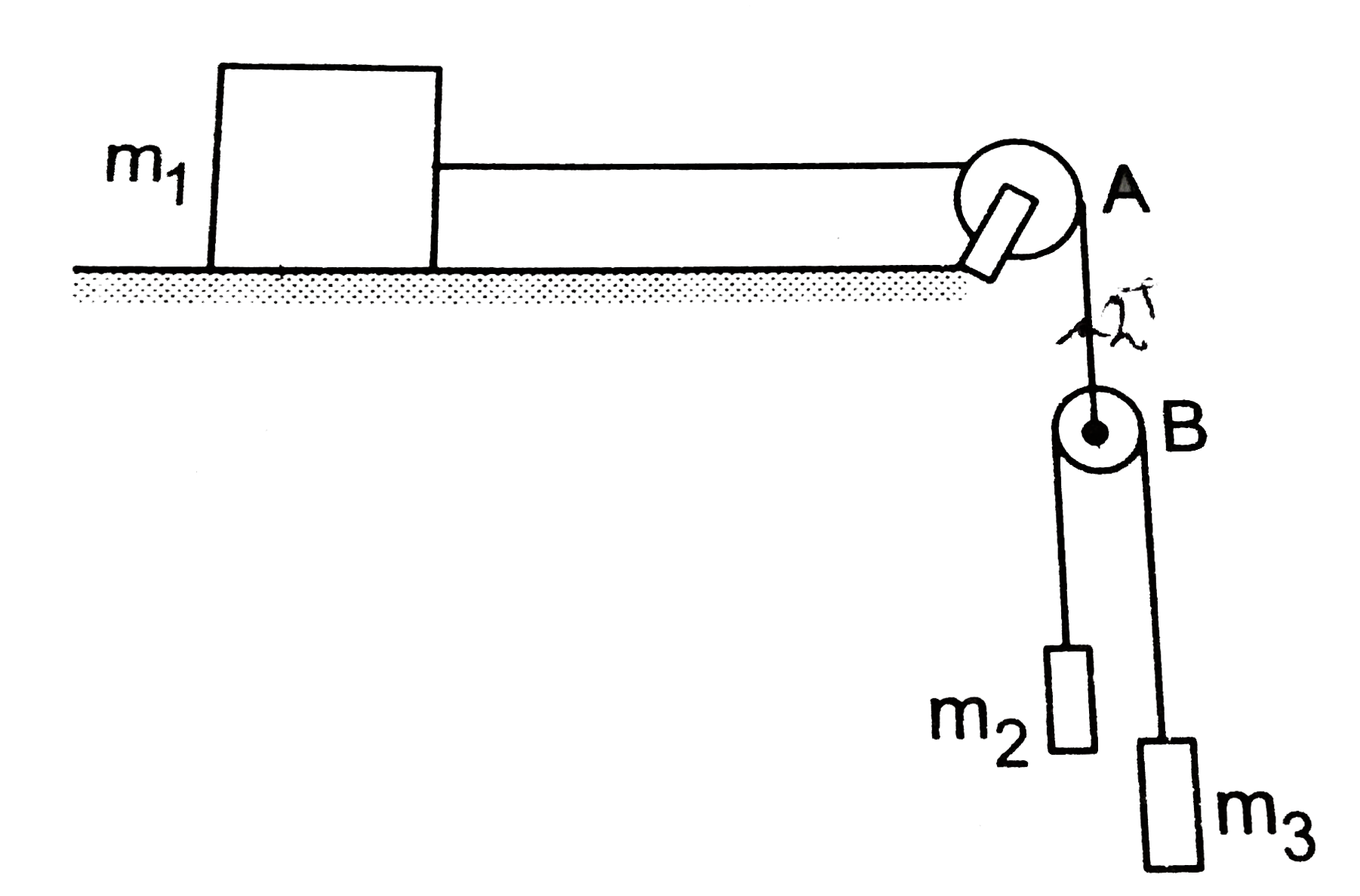 View Solution
View SolutionFind the acceleration of masses m1 and m2 moving down the smooth incline plane. The string and the pulley are masseless and frictionless.
View SolutionIn figure find the acceleration of m assuming that there is friction between mandM and all other surface are smooth and pulleys light and μ=coefficient of friction between mandM
 View Solution
View SolutionTwo blocks of masses m1 and m2 are connected by massless threads. The pulleys are massless and smooth if a1 is the magnitude value of acceleration of m1 and a2 is the magnitude value of acceleration of m2 find the ratio of a1a2
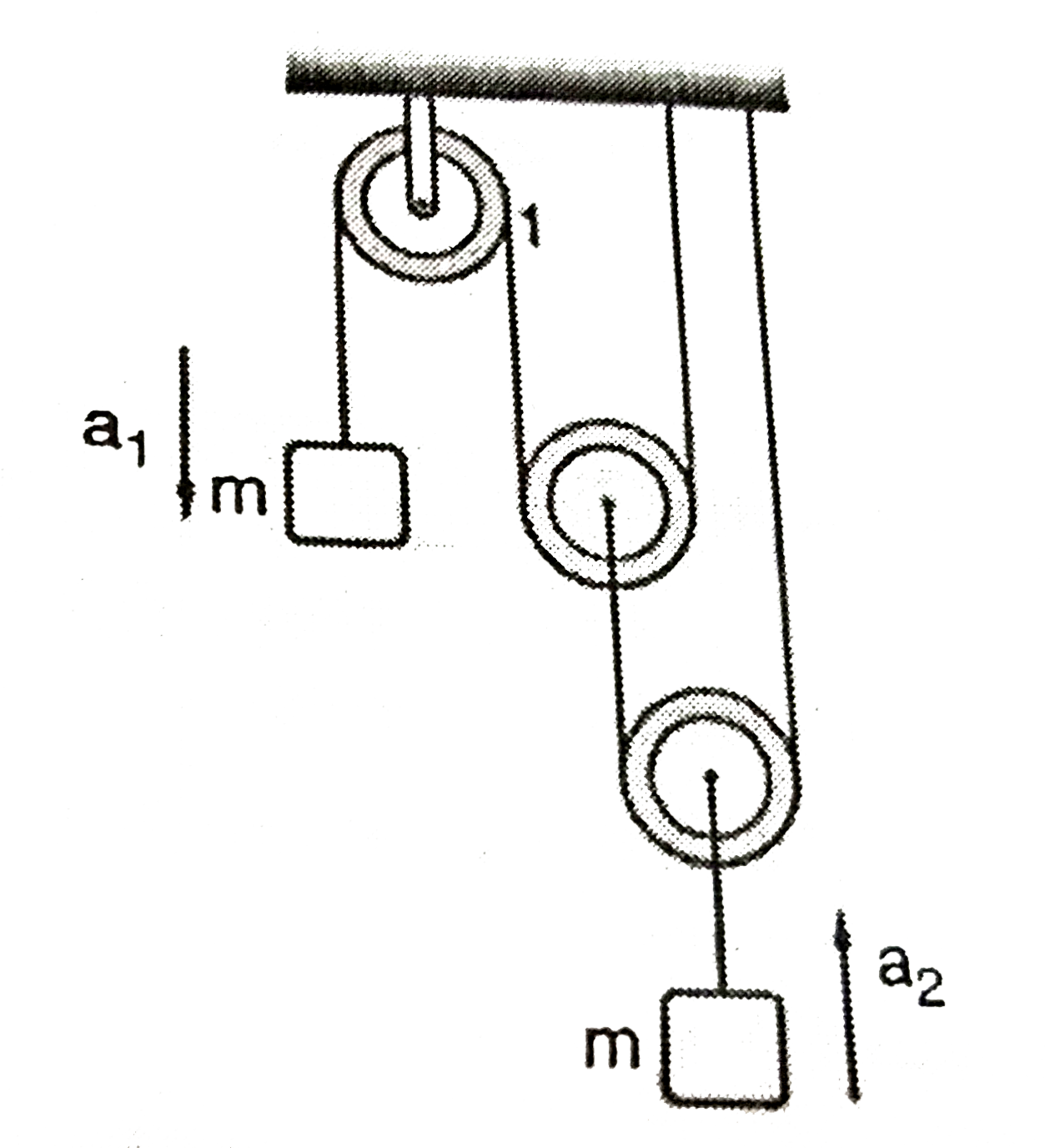 View Solution
View SolutionIn figure , find the acceleration of m assuming that there is friction between m and M,and all other surface are smooth and pulleys light and m = coeffiicient of friction between m and M .
 View Solution
View SolutionWhen we ignore friction and mass of pulley what would be the accelerations of the two blocks m1 and m2
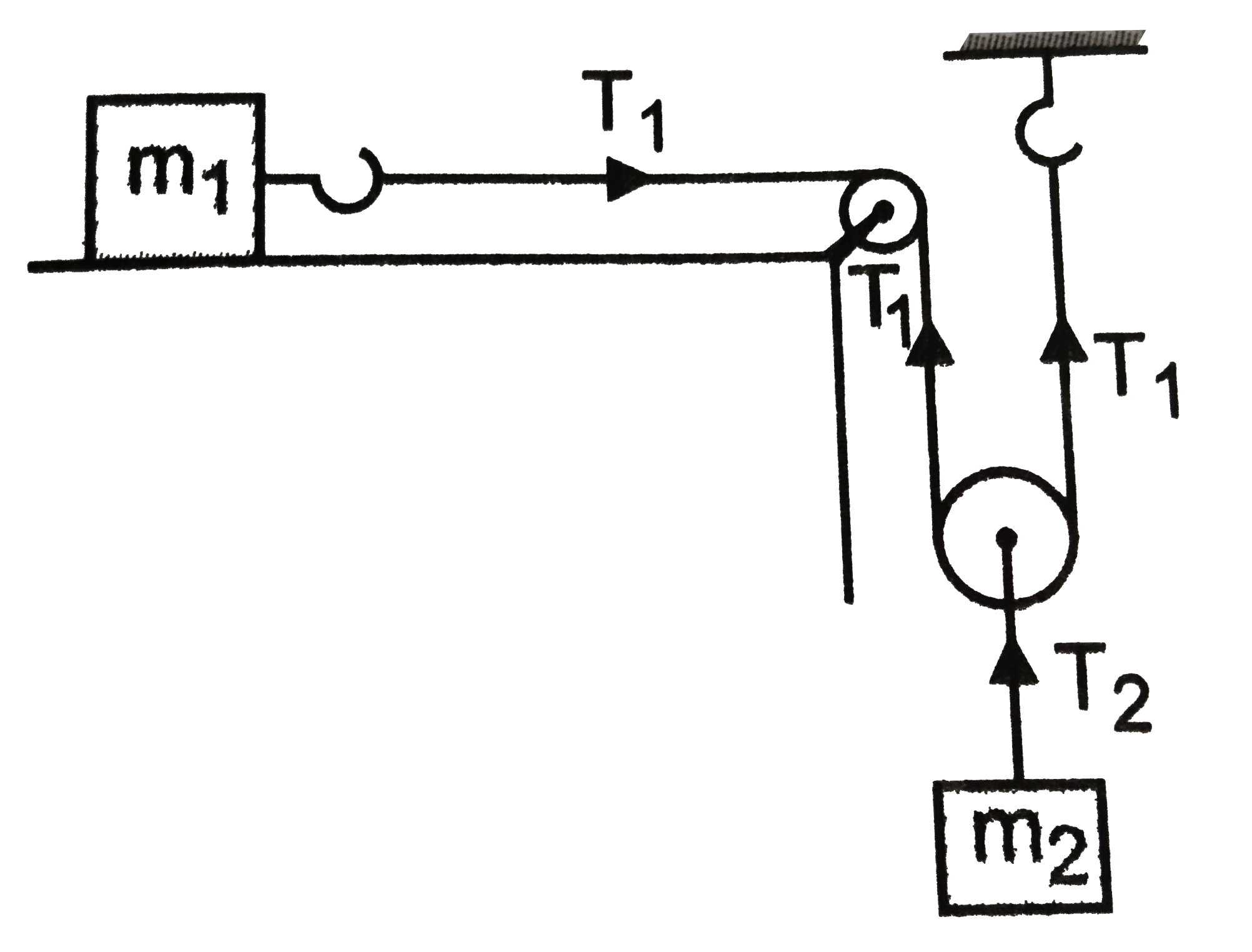 .View Solution
.View Solution


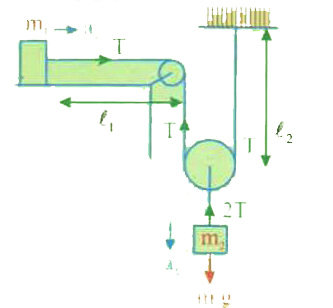
 .
.